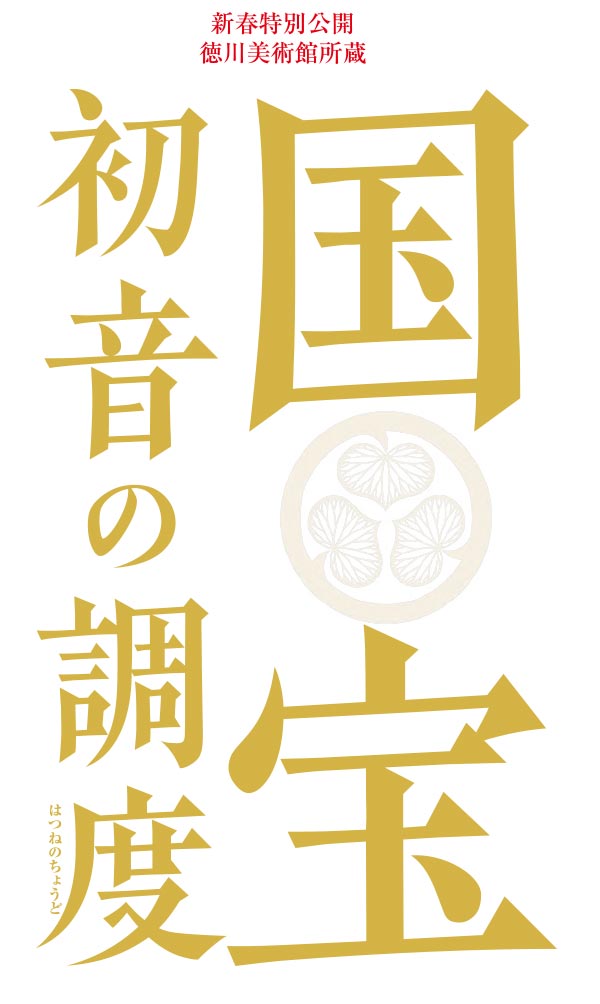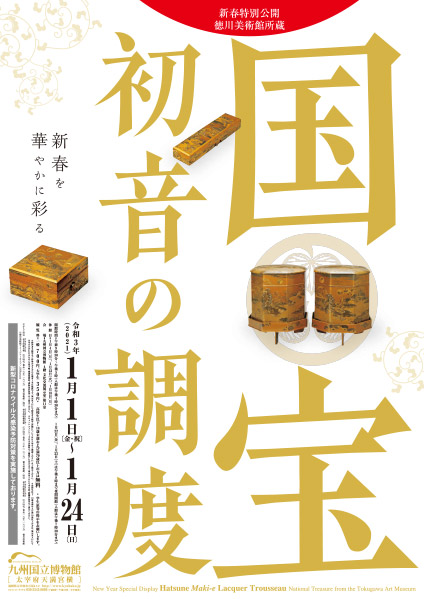Cultural Exchange Exhibition Hall New Year Special Display
Hatsune Maki-e Lacquer Trousseau
National Treasure from the
Tokugawa Art Museum
Exhibition period:
1 January 2021 (Fri) – 24 January 2021 (Sun)
Venue:
Cultural Exchange Exhibition Hall, Room 11
Introduction:
The New Year—a time for new things. New clothes, new resolutions, and perhaps even a new chapter in
life. All these come together in our tenth annual New Year Special Display of the Hatsune Trousseau, a
National Treasure on loan from the Tokugawa Art Museum. This spectacular trousseau is an example of a
set of furnishings that would have been created specially for a princess in the Edo period on the
occasion of her marriage. It was produced in 1639 for Princess Chiyohime’s marriage, and followed her to
her new home.
The Hatsune Trousseau is decorated with motifs from the “Hatsune” (The First Warbler) chapter of the
Heian-period narrative The Tale of Genji. This chapter features the protagonist Prince Genji
celebrating the New Year with his family, and contains a New Year’s poem that mentions “the first cry”
of the warbler. Japanese culture places particular importance on “firsts” around the New Year—first
visit to the shrine or temple, first dream of the year, first sunrise, and so on. It is for this very
connection that our museum has chosen to exhibit the Hatsune Trousseau during the start of each
year.
On display are three items from the Hatsune Trousseau, all decorated extravagantly in gold and silver
using maki-e lacquer. Supplementing them are a handscroll depicting an Edo-period wedding
procession, as well as items from another Edo-period trousseau that had belonged to the Nanbu clan of
Morioka Domain.
Exhibition Highlights
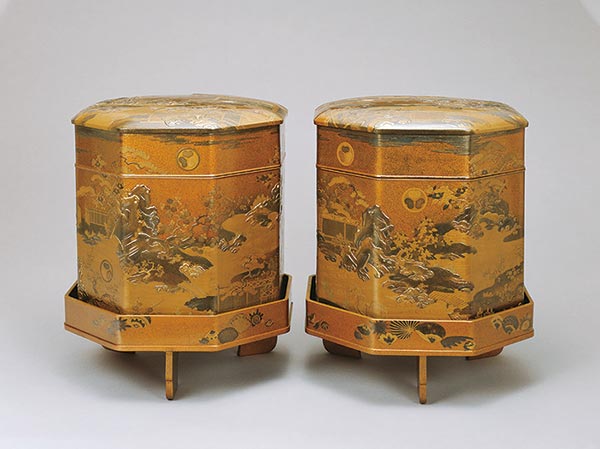
ⓒ Tokugawa Art Museum Image Archives/DNPartcom
National Treasure Hatsune maki-e containers for storing kaiōi shells
1639
Tokugawa Art Museum
These containers were used to store clam shells that would have been used in a game of kaiōi. As clam shells came in pairs that matched only with each other, they were taken to symbolize a wife’s fidelity. Their symbolic significance earned them an important position at the very front of the wedding procession.
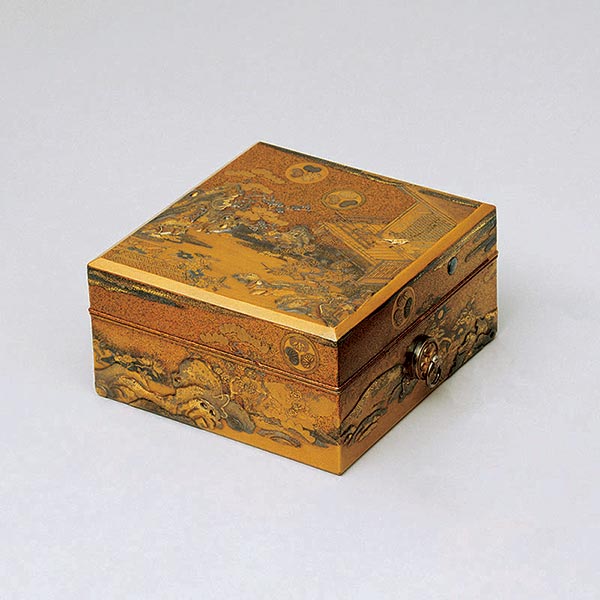
ⓒ Tokugawa Art Museum Image Archives/DNPartcom
National Treasure Hatsune maki-e lacquer box for storing konbu noshi
1639
Tokugawa Art Museum
Konbu noshi is a ceremonial knot made out of dried seaweed (konbu). It is presented as a wedding gift to congratulate the bride. In the Edo period, it was customary for married women to blacken their teeth. They would sometimes chew on seaweed to neutralize the pungent aftertaste left by the teeth-blackening substance.
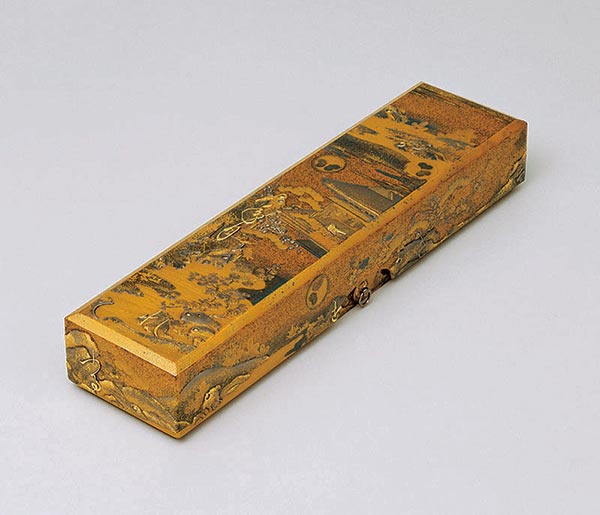
ⓒ Tokugawa Art Museum Image Archives/DNPartcom
National Treasure Hatsune maki-e lacquer toothbrush case
1639
Tokugawa Art Museum
Before modern toothbrushes, people of the Edo period split the ends of a willow branch into thin, splaying strips to clean their teeth. This is a case that would have been used to store such a brush.
